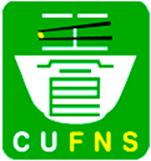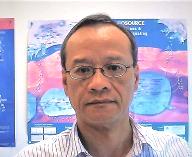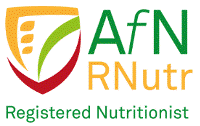
|
Principal-Investigator papers (Corresponding authorship) |
|
1 YQ Tan, Q Li, L Wang, LC Chiu-Leung, LK Leung (2020) The livestock growth-promoter zeranol facilitates GLUT4 translocation in 3T3 L1 adipocytes. Chemosphere, 126772 |
|
2 Tan YQ, Kwan HY, Yao X, Leung LK (2019) The activity of transient receptor potential channel C-6 modulates the differentiation of fat cells. FASEB Journal 33 (5), 6526-6538. |
|
3 Tan YQ, Chiu-Leung LC, Lin S, Leung LK (2018) The citrus flavonone hesperetin attenuates the nuclear translocation of aryl hydrocarbon receptor. Comparative Biochemistry and Physiology Part C: Toxicology & Pharmacology, 210, 57-64. |
|
4 Wong TY, Tan YQ, Lin S, Leung LK (2018) Co‐administrating apigenin in a high‐cholesterol diet prevents hypercholesterolaemia in golden hamsters. Journal of Pharmacy and Pharmacology 70 (9), 1253-1261 |
|
5 Wong TY, Tan YQ, Lin S, Leung LK (2017) Apigenin and luteolin display differential hypocholester-olemic mechanisms in mice fed a high-fat diet. Biomedicine & Pharmacotherapy 96, 1000-1007. |
|
6 Tan W, Huang S, Ye L, Leung LK (2017) Methylation Dictates PI.f-specific CYP19 Transcription in Human Glial Cells. Molecular and Cellular Endocrinology 452:131-137. |
|
7 Zhu Y, Tan YQ, Leung LK (2017) Exposure to 2, 2´, 4, 4´-Tetrabromodiphenyl Ether at Late Gestation Modulates Placental Signaling Molecules in The Mouse Model. Chemosphere 181:289íV295. |
|
8 Zhu Y, Tan YQ, CC Wang, Leung LK (2017) The Flame Retardant 2,2íŽ,4,4íŽ-Tetrabromodiphenyl Ether Enhances the Expression of Corticotropin-Releasing Hormone in the Placental Cell Model JEG-3. Chemosphere 174: 499íV505. |
|
9 Tan YQ, Wong TY, Lin S-M, Leung LK (2017) Dietary flavones counteract phorbol 12-myristate 13-acetate-induced SREBP-2 processing in hepatic cells. Molecular and Cellular Biochemistry Jan; 424(1-2):163-172. |
|
10 Zhu Y,Tan YQ, Leung LK (2016) Aflatoxin B1 disrupts transient receptor potential channel activity and increases Cox-2 expression in JEG-3 placental cells. Chemico-Biological Interactions Dec 25;260:84-90. |
|
11 Zhu Y, Tan YQ, Leung LK (2016) Assessing placental corticotrophin-releasing hormone disruption by a cell model. Environmental Toxicology and Pharmacology 2016 Dec;48:197-202. |
|
12 Zhu Y, Yao X, Leung LK. (2016) Zeranol induces Cox-2 expression through TRPC activation in the placental cells JEG-3. Toxicology In Vitro 35, 17-23. |
|
13 Wong TY, Tan YQ, Lin S-M, Leung LK (2016) Phorbol 12-myristate 13-acetate promotes nuclear translocation of hepatic steroid response element binding protein-2. International Journal of Biochemistry and Cell Biology 75 (Jun), 1-10. |
|
14 Wang Y, Tan W, Wang CC, Leung LK (2016) Exposure to aflatoxin B1 in late gestation alters protein kinase C and apoptotic protein expression in murine placenta.Reproductive Toxicology Mar 9;61:68-74. |
|
15 Wong TY, Lin S-M, Leung LK (2015) The flavone luteolin suppresses SREBP-2 expression and post-translational activation in hepatic cells. PLoS One Aug 24;10(8):e0135637. |
|
16 Wang Y, Tan W, Wang CC, Leung LK (2015) Aflatoxin B1 augments the synthesis of corticotropin-releasing hormone in JEG-3 cells. Chemico-Biological Interactions Jul 25;237:73-9. |
|
17 Wong TY, Lin S-M, Leung LK (2015) The flavone apigenin blocks nuclear translocation of sterol regulatory element-binding protein-2 in the hepatic cells WRL-68. British Journal of Nutrition Jun 28;113(12):1844-52. |
|
18 Li F, Wong TY, Lin S-M, Chow S, Cheung W-H, Chan FL, Chen S, Leung LK. (2014) Co-administrating luteolin minimizes the side effects of the aromatase inhibitor letrozole. Journal of Pharmacology and Experimental Therapeutic Nov;351(2):270-7. |
|
19 Wong TY, Lin S-M, Poon CH, Leung LK. (2014) The licorice flavonoid isoliquiritigenin reduces DNA-binding activity of AhR in MCF-7 cells. Chemico-Biological Interactions Sep;221:70-76. |
|
20 Wong TY, Li F, Lin S-M, Chan FL, Chen S, Leung LK. (2014) Celecoxib increases miR-222 while deterring aromatase-expressing breast tumor growth in mice. BMC Cancer Jun 12;14:426. |
|
21 Wang Y, Wong TY, Chan FL, Chen S, Leung LK. (2014) Assessing the effect of food mycotoxins on aromatase by using a cell-based system. Toxicology In Vitro Jun;28(4):640-6. |
|
22 Wang Y, Li L, Wang CC, Leung LK. (2013) Effect of zeranol on expression of apoptotic and cell cycle proteins in murine placentae. Toxicology 314(1): 148íV154. |
|
23 Tan W, Wong TY, Wang Y, Huang J, Leung LK. (2013) CYP19 Expression is induced by 2,3,7,8-tetrachloro-dibenzo-para-dioxin in human glioma cells. Molecular and Cellular Endocrinology 375(1-2):106-112. |
|
24 Tan W, Huang H, Wang Y, Wong TY, Wang CC, Leung LK. (2013) Bisphenol A differentially activates protein kinase C isoforms in murine placental tissue. Toxicology and Applied Pharmacology 269(2):163-168. |
|
25 Wang Y, Tan W, Leung LK. (2013) Zeranol upregulates corticotrophin-releasing hormone expression in the placental cell line JEG-3. Toxicology Letters 219(3):218-222. |
|
26 Li FJ, Chow S, Cheung W-H, Chan FL, Chen S, Leung LK. (2013) The citrus flavonone hesperetin prevents letrozole-induced bone loss in a mouse model of breast cancer. Journal of Nutritional Biochemistry Jun;24(6):1112-6. |
|
27 Poon CH, Wong TY, Wang Y, Tsuchiya Y, Nakajima M, Yokoi T, Leung LK. (2013)The citrus flavanone naringenin suppresses CYP1B1 transactivation through antagonizing XRE-binding. British Journal of Nutrition 109:1598-1605. |
|
28 Huang H, Tan W, Wang CC, Leung LK. (2012) Bisphenol-A induces corticotrophin-releasing hormone expression in the placental cells JEG-3. Reproductive Toxicology 34(3):317-322. |
|
29 Ye L, Chan FL, Chen S, Leung LK. (2012) The citrus flavonone hesperetin inhibits growth of aromatase-expressing MCF-7 tumor in ovariectomized athymic mice. Journal of Nutritional Biochemistry 23(10):1230-7. |
|
30 Huang H, Li L, Wang Y, Tang LY, Wang CC, Leung LK. (2011) Genistein upregulates placental corticotropin-releasing hormone expression in lipopolysaccharide-sensitized mice. Placenta 32(10):757-62. |
|
31 Li FJ, Ye L, Lin SM, Leung LK. (2011) Dietary flavones and flavonones display differential effects on aromatase (CYP19) transcription in the breast cancer cells MCF-7. Molecular and Cellular Endocrinology 344(1-2):51-8. |
|
32 Lau GT, Huang H, Lin SM, Leung LK. (2010) Butein downregulates phorbol 12-myristate 13-acetate -induced COX-2 transcriptional activity in cancerous and non-cancerous breast cells. European Journal of Pharmacology Dec 1;648(1-3):24-30. |
|
33 Lau GT, Leung LK. (2010) The dietary flavonoid apigenin blocks phorbol 12-myristate 13-acetate-induced COX-2 transcriptional activity in breast cell lines. Food and Chemical Toxicology Oct 10; 48:3022-3027. |
|
34 Wang H, Leung LK. (2010) The carotenoid lycopene differentially regulates Phase I & II enzymes in DMBA-induced MCF-7 cells. Nutrition Nov-Dec;26(11-12):1181-7. |
|
35 Lau GT, Ye L, Leung LK. (2010) The licorice flavonoid isoliquiritigenin suppresses phorbol ester-induced Cyclooxygenase-2 expression in the non-tumorigenic MCF-10A breast cell line. Planta Medica May 76; 780-5. |
|
36 Chan MY, Huang H, Leung LK. (2010) 2,3,7,8-Tetrachlorodibenzo-para-dioxin increases aromatase (CYP19) mRNA stability in MCF-7 cells. Molecular and Cellular Endocrinology Apr 12; 317: 8-13. |
|
37 Huang H, Leung LK. (2009) Bisphenol-A downregulates CYP19 transcription in JEG-3 cell. Toxicology Letters Sep 28; 189(3):248-52. |
|
38 Leung HY, Yung LH, Poon CH, Shi G, Lu A-L, Leung LK. (2009) The red wine polyphenol resveratrol reduces polycyclic aromatic hydrocarbon-induced DNA damage in MCF-10A cells. British Journal of Nutrition Nov; 102(10):1462-8. |
|
39 Ye L, Chan MY, Leung LK. (2009) The soy isoflavone genistein induces estrogen synthesis in an extragonadal pathway. Molecular and Cellular Endocrinology Apr 10; 302(1):73-80. |
|
40 Ye L, Gho WM, Chan FL, Chen S, Leung LK. (2009) Dietary administration of the licorice flavonoid isoliquiritigenin deters growth of MCF-7 cells overexpressing aromatase. International Journal of Cancer Mar 1; 124(5): 1028-36. |
|
41 Leung HY, Yung LH, Poon CH, Shi G, Lu A-L, Leung LK. (2008) Genistein protects against PAH-induced oxidative DNA damage in the non-cancerous breast cells MCF-10A. British Journal of Nutrition, Feb; 101(2):257-62. |
|
42 Wang Y, Ye L, Leung LK (2008) A positive feedback pathway of estrogen biosynthesis in breast cancer cells is contained by resveratrol. Toxicology Jun 27; 248(2-3): 130-5. |
|
43 Ye L, Leung LK (2008) Effect of dioxin exposure on aromatase expression in ovariectomized rat. Toxicology and Applied Pharmacology May 15; 229(1): 102-8. |
|
44 Leung HY, Wang Y, Leung LK. (2007) Differential effect of Over-expressing UGT1A1 and CYP1A1 on xenobiotic assault in MCF-7 cells. Toxicology 242(1-3): 153-9. |
|
45 Yuen YM, Leung LK. (2008) Genistein and daidzein induced ApoA-1 transactivation in HepG2 cells expressing estrogen receptor. British Journal of Nutrition 99:1007-12. |
|
46 Wang Y, Gho WM, Chan FL, Chen S, Leung LK (2008) The red clover isoflavone biochanin A inhibits aromatase activity and expression. British Journal of Nutrition 99:303-10. |
|
47 Wang Y, Leung LK (2007) Pharmacological concentration of resveratrol suppresses aromatase in JEG-3 cells. Toxicology Letters 173:175-180. |
|
48 Chan MY, Gho WM, Chen ZY, Wang J, Leung LK (2007) Estrogen receptor is required for biochanin A-induced ApoA-1 mRNA expression in HepG2 cells. British Journal of Nutrition 98: 534-539. |
|
49 Leung HY, Wang Y, Chan HY, Leung LK (2007) Developing a high-throughput system for the screening of cytochrome p450 1A1-inhibitory polyphenols. Toxicology In Vitro 21:996-1002. |
|
50 Lau TY, Leung LK (2006) Soy isoflavones suppress phorbol 12-myristate 13-acetate-induced COX-2 expression in MCF-7 cells. British Journal of Nutrition 96:169-176. |
|
51 Wang Y, Lee KW, Chan FL, Chen S, Leung LK (2006) The red wine polyphenol resveratrol displays bi-level inhibition on aromatase in breast cancer cells. Toxicological Sciences 92(1):71-77. |
|
52 Chan NLS, Wang H, Wang Y, Leung HY, Leung LK (2006) Polycyclic aromatic hydrocarbon-induced CYP1B1 activity is suppressed by perillyl alcohol in MCF-7 cells. Toxicology and Applied Pharmacology 213(2):98-104 |
|
53 Leung LK, Yuen YM, Leung HY, Wang Y. (2005) Dietary soya isoflavones and breast carcinogenesis: a perspective from a cell-culture model. Nutrition Research Review 18:202-211. |
|
54 Wang Y, Chan FL, Chen S, Leung LK. (2005) The plant polyphenol butein inhibits testo-sterone-induced proliferation in breast cancer cells expressing aromatase. Life Sciences 77:39-51. |
|
55 Wang H, Wang Y, Chen ZY, Chan FL and Leung LK (2005) Hydroxychalcones exhibit differential effects on XRE transactivation, Toxicology 207: 303-313. |
|
56 Leung LK, Po LS, Lau TY, Yuen YM. (2004) Effect of dietary flavonols on oestrogen receptor transactivation and cell death induction. British Journal of Nutrition, 91(6):831-9. |
|
57 Chan HY, Leung LK. (2003) A potential protective mechanism of soy isoflavones against DMBA tumor initiation. British Journal of Nutrition 90:457-465. |
|
58 Chan HY, Wang H, Leung LK. (2003) The red clover (trifolium pratense) isoflavone biochanin A modulates the biotransformation pathways of DMBA. British Journal of Nutrition 90:87-92. |
|
59 Chan HY, Wang H, Chen ZY, Tsang DSC, Leung LK. (2003) Screening of chemopreventive tea polyphenols against PAH genotoxicity in breast cancer cells by a XRE-luciferase reporter construct. Nutrition and Cancer 46:93-100 |
|
60 Po LS, Wang TT, Chen ZY, Leung LK. (2002) Genistein-induced apoptosis in MCF-7 cells involves changes in Bak and Bcl-x without evidence of anti-oestrogenic effects. British Journal of Nutrition 88:463-469. |
|
61 Po LS, Chen ZY, Tsang DSC, Leung LK. (2002) Baicalein and genistein display differential actions on ER transactivation and apoptosis in MCF-7 cells. Cancer Letters 187(1-2): 33-40. |
|
62 Chan HY, Chen ZY, Tsang DSC, Leung LK. (2002) Baicalein reduces DMBA-DNA adduct formation by modulating CYP1A1 and CYP1B1. Biomedicine and Pharmacotherapy 56(6):269-275. |
|
63 Leung LK, Wang TT. (2000) Bcl-2 is not reduced in the death of MCF-7 cells at low genistein concentration. Journal of Nutrition, 130(12):2922-6. |
|
Co-Investigator papers |
|
1 PSP Yip, TFJ Chan, Z He, LK Leung, SFS Leung, ZY Chen. (2020) Quantification of breast milk trans fatty acids and trans fat intake by Hong Kong lactating women. European Journal of Clinical Nutrition, 1-10. |
|
2 Y Zhu, M Xie, Z Meng, LK Leung, FL Chan, X Hu, K Chi, C Liu, X Yao. (2019) Knockdown of TM9SF4 boosts ER stress to trigger cell death of chemoresistant breast cancer cells. Oncogene 38 (29), 5778-5791. |
|
3 Honjo K, Hamada T, Yoshimura T, Yokoyama S, Yamada S, Tan YQ, Leung LK, Nakamura N, Ohi Y, Higashi M, Tanimoto A. (2018) PCP4/PEP19 upregulates aromatase gene expression via CYP19A1 promoter I. 1 in human breast cancer SK-BR-3 cells.Oncotarget 9 (51), 29619 |
|
4 Xiao Z, Huang C, Wu J, Sun L, Hao W, Leung LK, Huang J. (2013) The neuroprotective effects of ipriflavone against H2O2 and amyloid beta induced toxicity in human neuroblastoma SH-SY5Y cells. Eur J Pharmacol Dec 5;721(1-3):286-93. |
|
5 Yuen MT, Leung LK, Wang J, Wong YC, Chan FL. (2005) Enhanced induction of prostatic dysplasia and carcinoma in Noble rat model by combination of neonatal estrogen exposure and hormonal treatments at adulthood. International Journal of Oncology 27(6): 1685-95. |
|
6 Su YL, Xu JZ, Ng CH, et al. (2004) Antioxidant activity of tea theaflavins and methylated catechins in canola oil. Journal of the American Oil Chemists' Society 81 (3): 269-274. |
|
7 Xu JZ, Leung LK, Huang Y, et al. (2003) Epimerisation of tea polyphenols in tea drinks. Journal of the Science of Food and Agriculture 83 (15): 1617-1621. |
|
8 Ho HM, Leung LK, Chan FL, Huang Y, Chen ZY. (2003) Soy leaf lowers the ratio of non-HDL to HDL cholesterol in hamsters. Journal of Agricultural and Food Chemistry, 51: 4554-4558. |
|
9 Su YL, Leung LK, Huang Y, Chen ZY (2003) Stability of tea theaflavins and catechins. Food Chemistry 83 (2): 189-195. |
|
10 Ho HM, Chen RY, Leung LK, Chan FL, Huang Y, Chen ZY. (2002) Difference in flavonoid and isoflavone profile between soybean and soy leaf. Biomedicine and Pharmacotherapy 56(6):289-95. |
|
11 Leung LK, Su Y, Chen R, Zhang Z, Huang Y, Chen ZY. (2001) Theaflavins in black tea and catechins in green tea are equally effective antioxidants. Journal of Nutrition 131(9):2248-51. |
|
12 Yang L., Leung LK, Huang Y, Chen ZY. (2000) Oxidative stability of conjugated linoleic acid isomers. Journal of Agricultural and Food Chemistry 48(8):3072-6. |
|
13 Su YL, Leung LK, Bi YR, Huang Y, Chen ZY. (2000) Antioxidant activity of flavonoids isolated from scutellaria rehderiana. Journal of the American Oil Chemists' Society 77: 807-812. |
|
List of Publications: Total 86 journal articles & 12 conference abstracts All refereed publications Since joining CUHK |
|
Lai K. Leung, Associate Professor Registered Nutritionist (UKVRN) |


|
The Chinese University of Hong Kong |
|
Food & Nutritional Sciences Programme / School of Life Sciences |
Research AreaToxicology & Pharmacology of Food Chemicals Apart from nutrition, our food contains chemicals that are potentially beneficial or harmful to our health. Regulation of dietary phytochemicals and food contaminants on genes responsible for physiological signaling is the main investigation objective of our lab. The signaling molecules on which we are working are crucial in reproduction and chronic disease development. These studies are important in extrapolating the disease-prevention and toxicity of food chemicals. Animal and cell culture models have been developed to address these issues.
Ad hoc manuscript reviewerCancer Research, Cancer Letters, BMC Cancer, Anti-Cancer Drugs, International Journal of Biochemistry & Cell Biology, Journal of Nutrition, British Journal of Nutrition, Molecular Nutrition & Food Research, Nutrition Research, Nutrition and Cancer, Journal of Food Biochemistry, Journal of Agricultural and Food Chemistry, Journal of Medicinal Food, Food and Function, Journal of Functional Foods, Toxicological Sciences, Toxicology in Vitro, Food and Chemical Toxicology, Chemical Research in Toxicology, Expert Opinion on Drug Metabolism and Toxicology, Journal of Pharmacy and Pharmacology, Planta Medica, Biomedicine & Pharmocotherapy, Phytotherapy Research, PLoS One, BBA-General Subjects, BBA-Molecular Basis of Disease, Molecular Therapy-Nucleic Acids, Molecular and Cellular Endocrinology, Journal of Steroid Biochemistry and Molecular Biology, Environmental Pollution, Chemosphere, Science of the Total Environment.
Education Postdoc - NCI-Frederick and U. of Maryland PhD (Nutritional Sciences) - U. of Kentucky MSc (Food Sci & Human Nutrition) - U. of Wyoming BSc (Food Sciences) - U. of Alberta
|
|
To contact me: Rm.507C MMW Bldg, School of Life Sciences The Chinese University of Hong Kong Shatin, Hong Kong Phone: 852-39438137; E-mail: laikleung@yahoo.com
|


